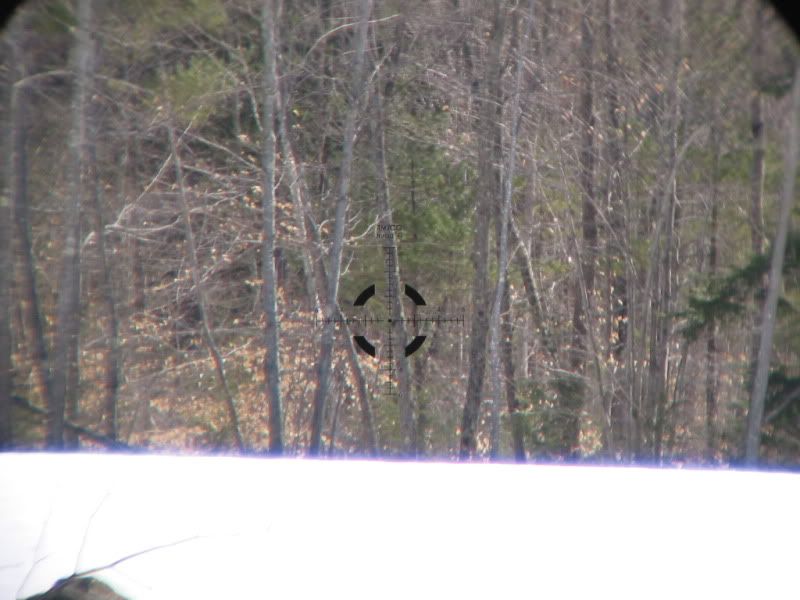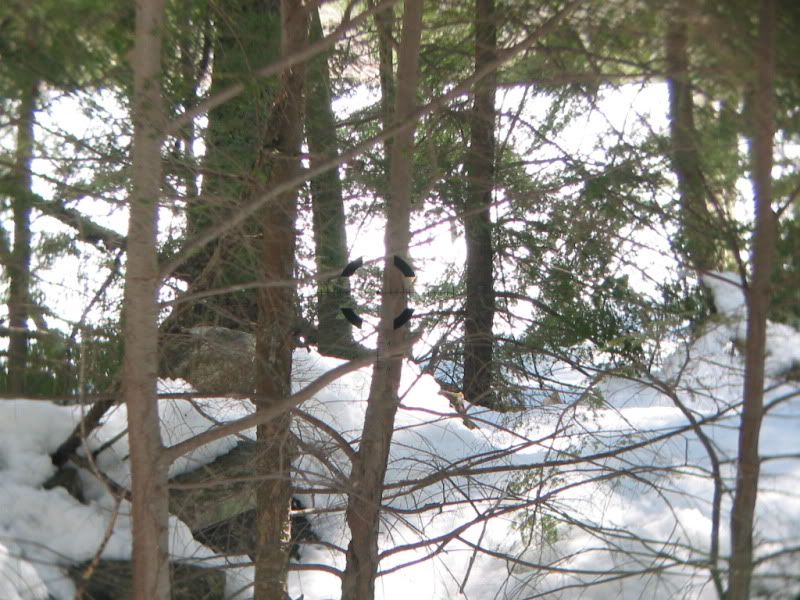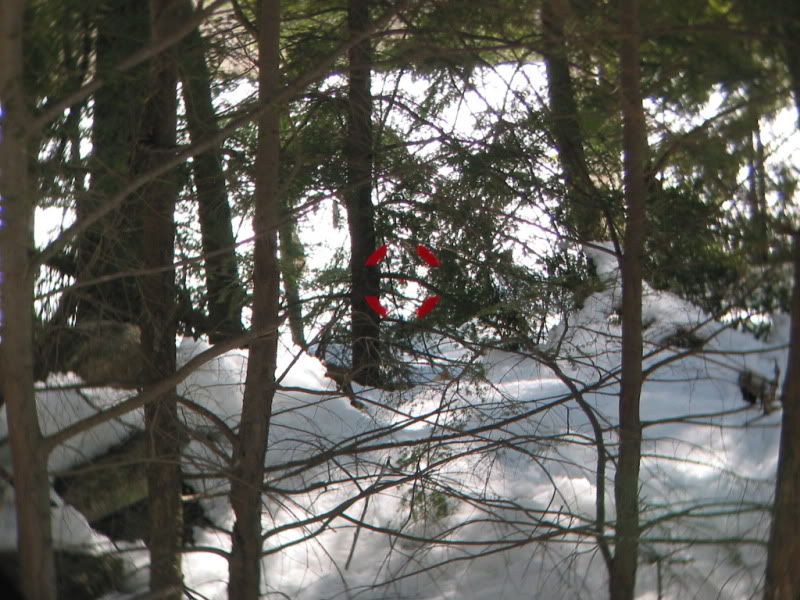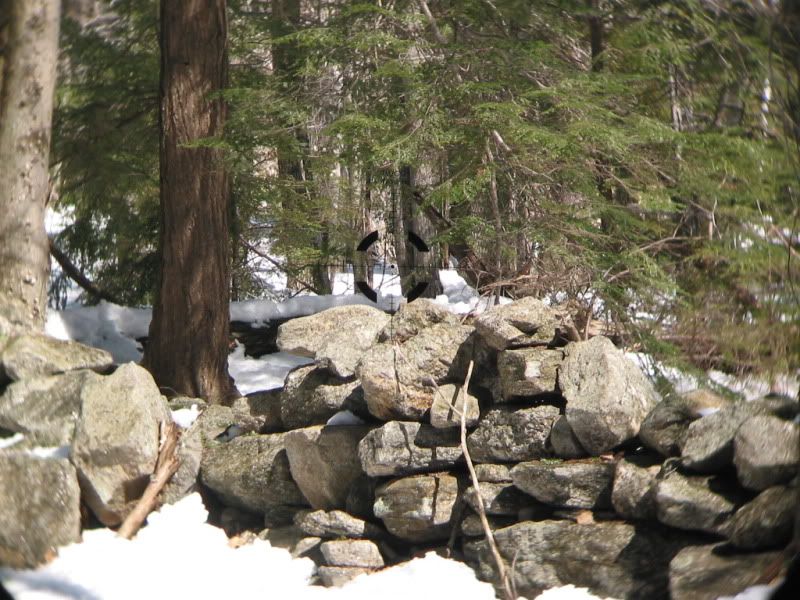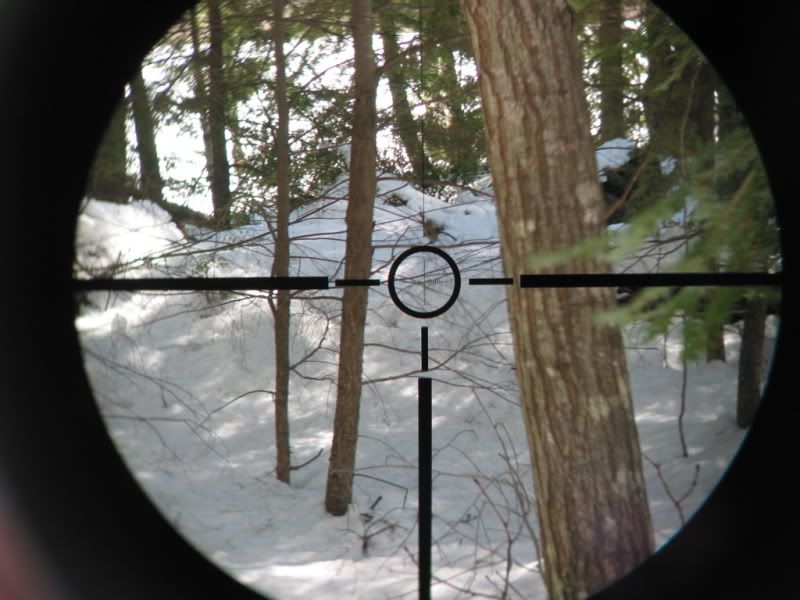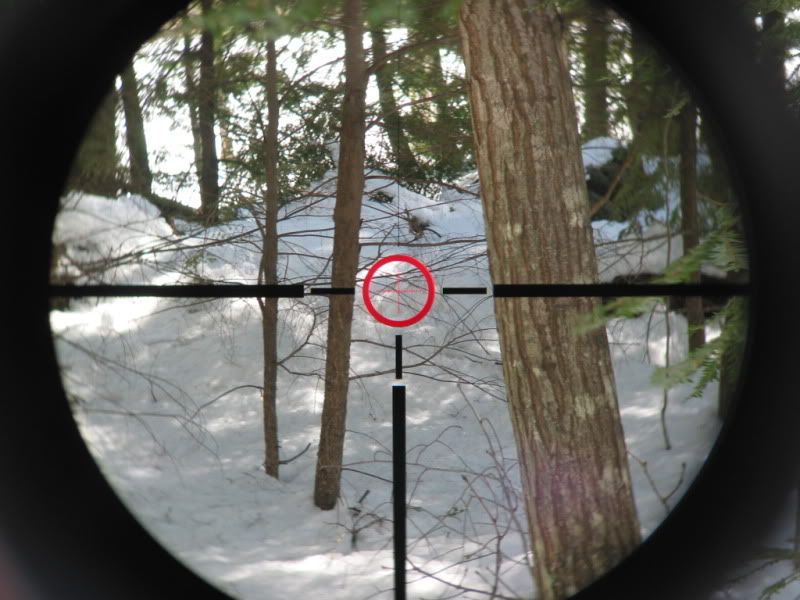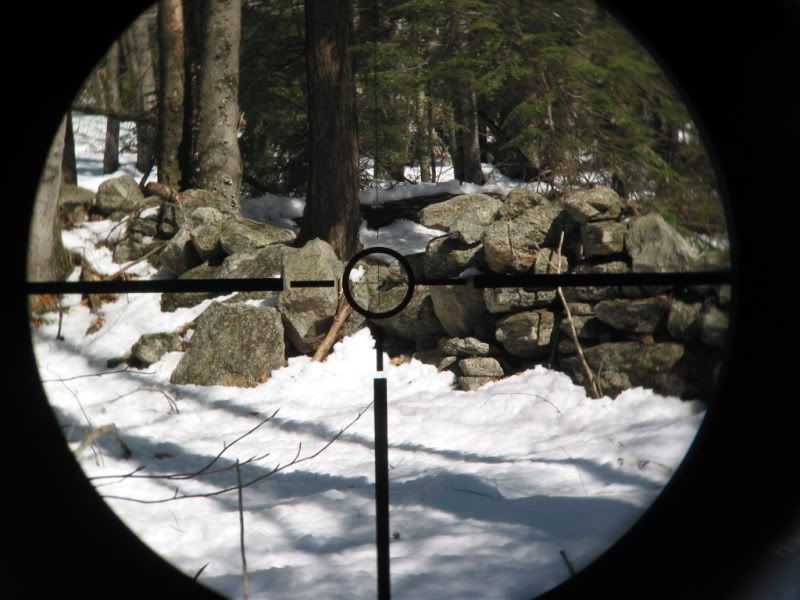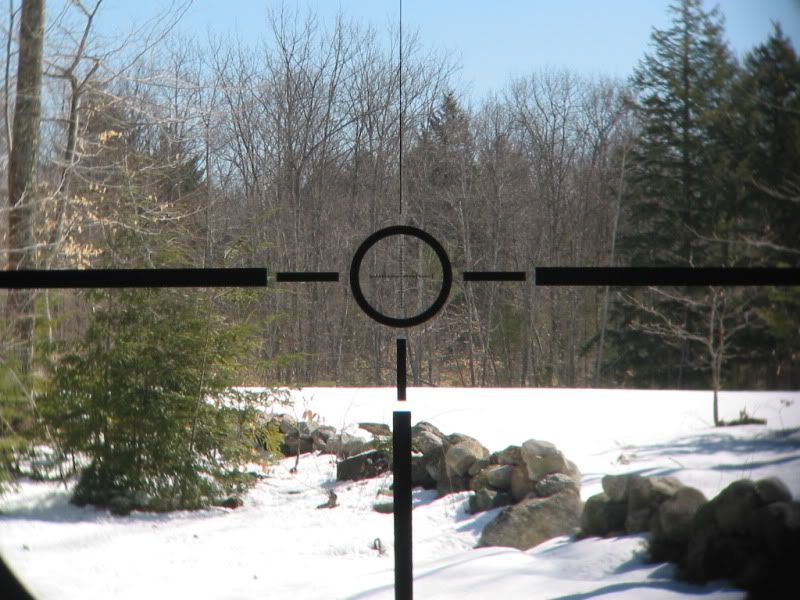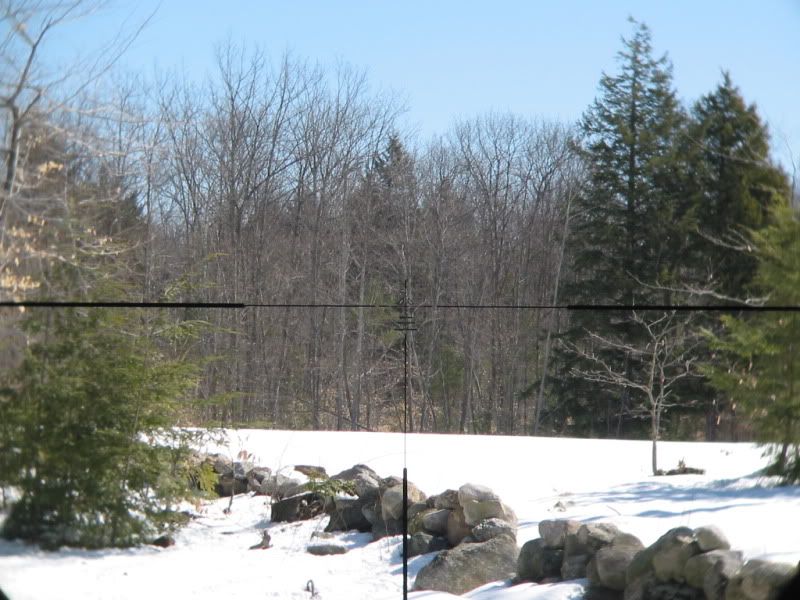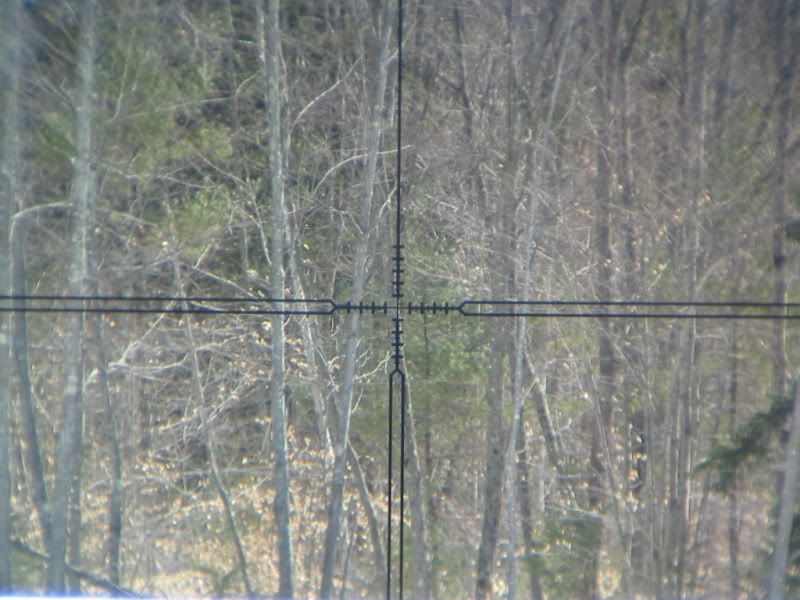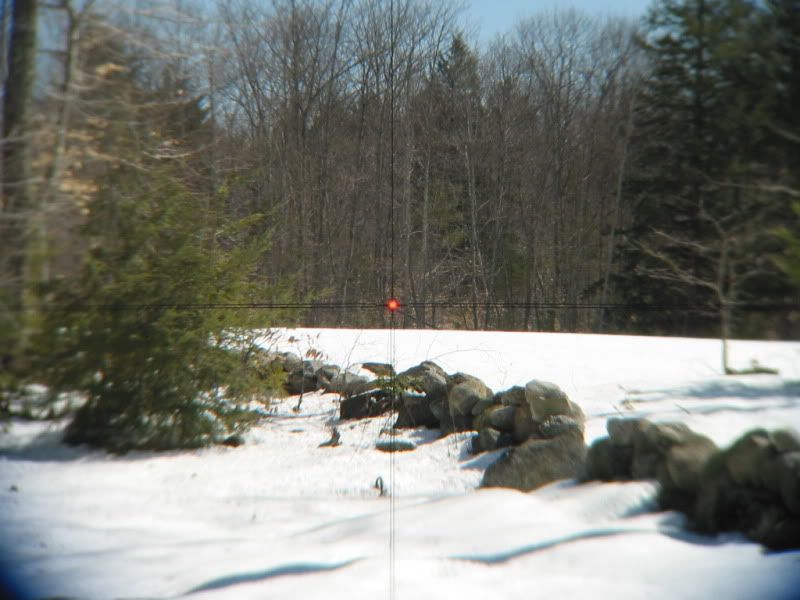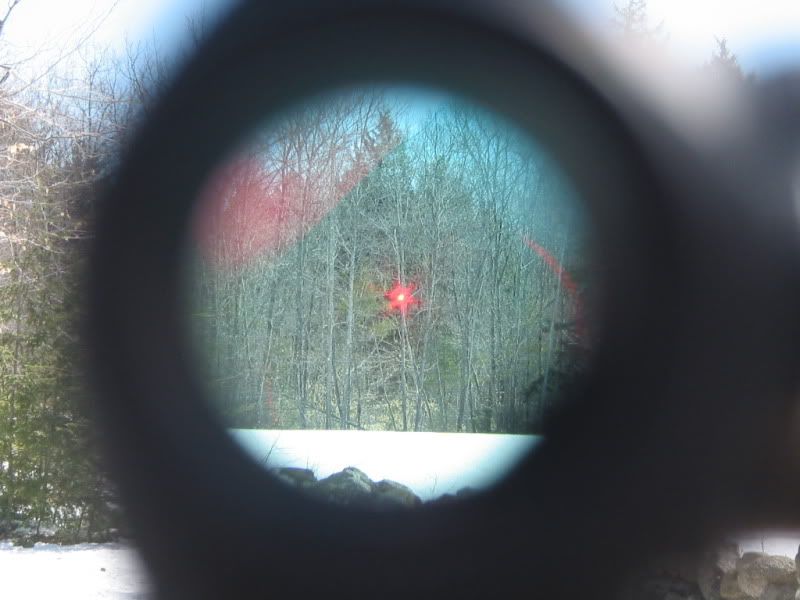Original Review of the SWFA 1-4HD: LINK
Hello all. Here is a blue collar comparison of seven low power variable scopes. A friend of mine let me borrow them so I could spread the good word across this great nation of ours. I'm simply giving my personal observations with regards to glass quality, construction, reticle design, illumination, price, etc. I didn’t put any rounds downrange with these scopes. This is soley based on my handling and comparing them to each other. Moreover, this is a review of how they stack up to the SS 1-4 HD. Simply looking to pay forward my time spent reading Snipershide. Cheers!
Pictured, from left to right:
BSA Cats Eye, Leatherwood CMR, Nightforce NXS 1-4 Mildot, Trijicon TR24 German #4, Vortex PST 1-4, Vortex Razor HD 1-4, and S&B 1.1-4 Short Dot. Up top is the SS 1-4 HD.
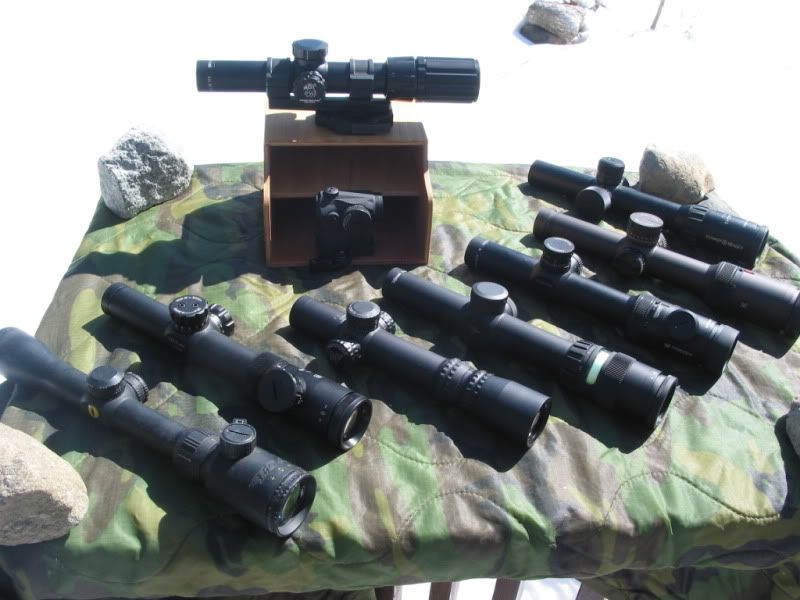
I'm of the opinion that a performance at 1X is extremely important, otherwise, why go with a 1X-4X at all? I'm also of the opinion that an AR15's usefulness is best served below a few hundred yards. Reticle design is paramount. That said, I think an accurized carbine is certainly capable beyond that range. Again, reticle design is paramount as is glass quality. To be able to do it all through a low power variable - that scope needs to cater to CQB type applications at 1X magnification yet boast some real legitimate benefits at 4X. Having the chance to weigh several scopes against each other I am absolutely in favor of the SS 1-4 HD. I'll do my best to explain why. For a general purpose low power variable scope, the SS exceeds every option I’d want to ride my carbines.
First - the comparisons. Cut and pasted specs from each company’s page. Mind you these are just my opinions, nothing more.
BSA Catseye:
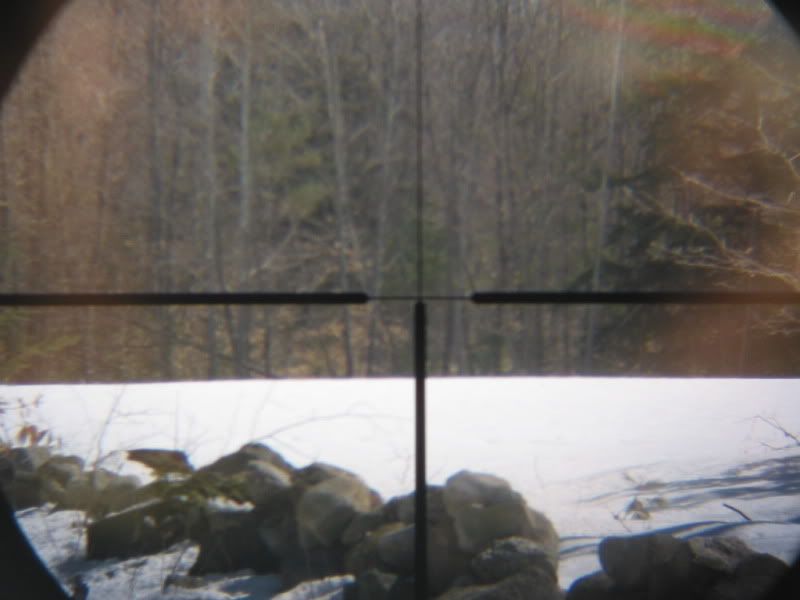

*I wrote the specs on this one…
Weight (oz): fat hamster
Length (in): skid mark
Eye Relief (in): not far enough
Field of View @ 100yds (ft): thumb’s width
Exit Pupil (mm): wtf does it even matter, really
MOA: 1 click = 16” oak tree
Lens Coating: Lard
Warranty: Couldn’t pay me to mail it in.
This rubberized paper towel roll sucks so bad; I had a hard time taking pictures of it. The illumination broke, the reticle is canted, and the glass is speckled with toenail grit from the floor of a low budget Chinese factory. The glare off the ocular requires you to wear sunglasses. It never made it back inside the house. It's 20 something feet into the treeline. Hit an oak and careened off into a hemlock. It will probably stay there unless it offends the wildlife and gets thrown back through my kitchen window. Priced at $75 or something....it's the perfect scope for a pellet rifle or spitball straw. Compared to the SS, this scope should be crushed, melted, and recycled into Butler Creek flip up scope covers.
Leatherwood CMR:

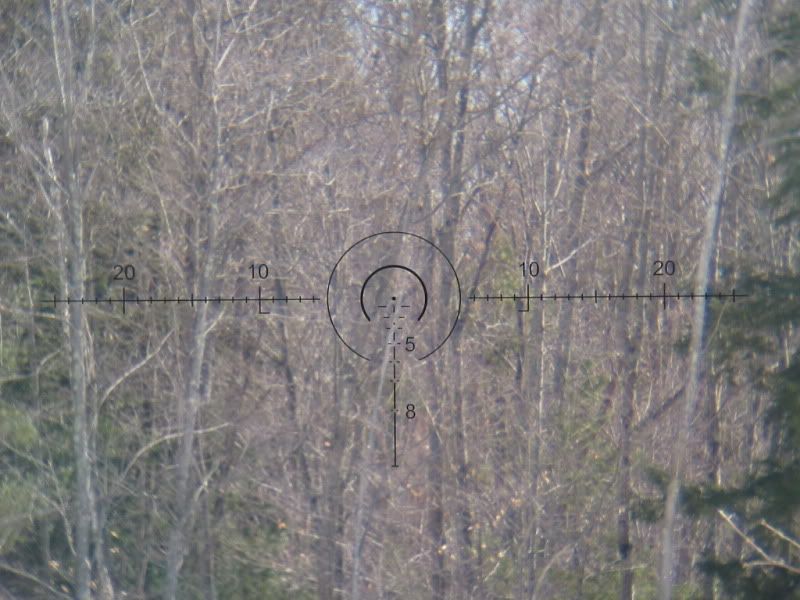
Weight (oz):16.5
Length (in):10.2
Eye Relief (in):3
Field of View @ 100yds (ft):94.8 - 26.2
Exit Pupil (mm):11.1 - 6
MOA:1/2
Lens Coating: Diamond TuFF14
Warranty: Limited Lifetime
I don’t feel like writing too much on this one. The value is primarily with its cost. It’s made in China. Unmistakably feels less quality compared to some of the other optics in the line up. Most of my hesitation lies with the fit and finish. Pretty sure it wouldn’t take much to mar the coating on this optic. The reticle is overly complicated in my opinion. The illumination is green and isn’t consistently bright across the horseshoe. Not daytime visible. Worth it? For an affordable entry level “tactical” scope under $300? Absolutely. As for how the CMR compares to the SS, it really doesn’t on any level. It’s a fraction of the SS at a fraction of the price. Still, I think the CMR has its place although for the money I’d probably want a reputable traditional scope over a budget tactical option. That’s just me though. YMMV.
Trijicon Accupoint TR24-3G:
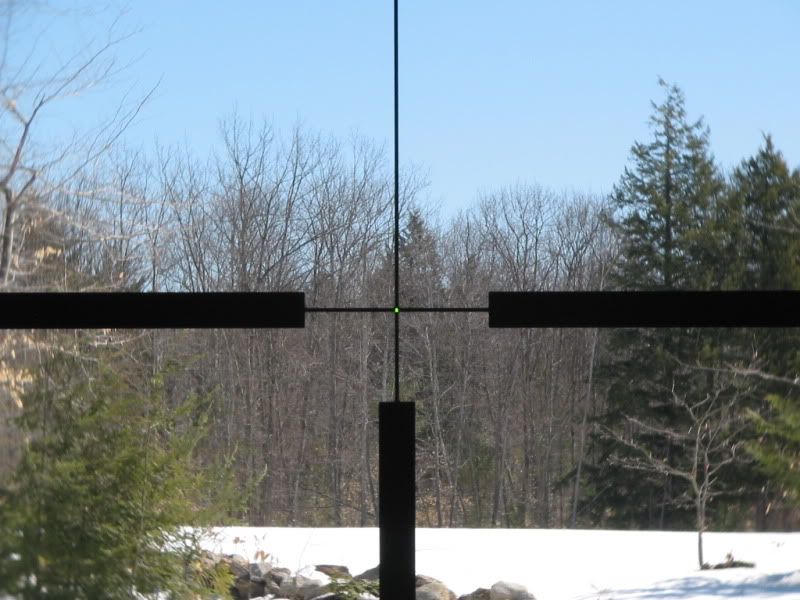
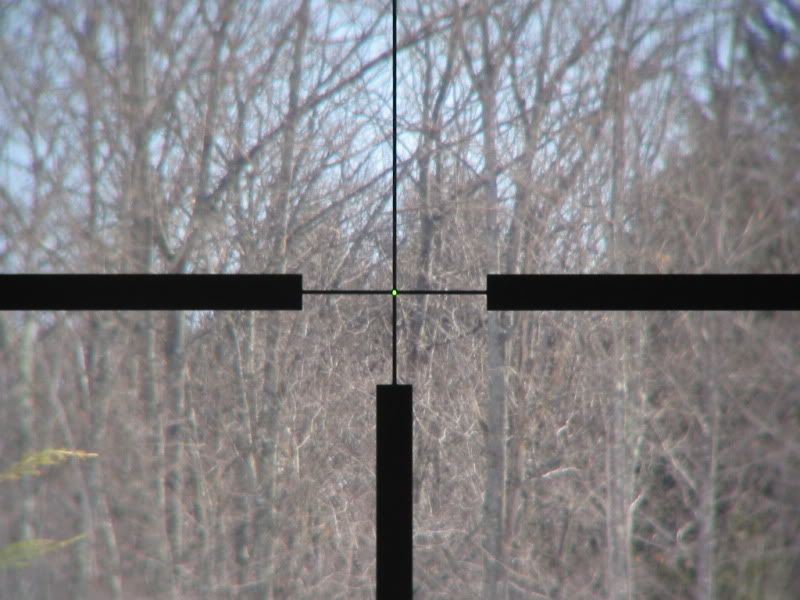
Magnification 1x-4x
Objective Size 24
Bullet Drop Compensator No
Length (In) 10.3
Weight (oz) 14.4
Illumination Source Fiber Optics & Tritium
Reticle Pattern German #4 Crosshair
Day Reticle Color Green
Night Reticle Color Green
Eye Relief 3.2
Exit Pupil 17.5 to 5.1
Field of View @ 100 yards (ft) 97.5 to 24.2
Adjustment @ 100 yards (clicks/in) 4
Tube Size 30mm
Who doesn’t have some love for the Accupoint? It’s a great scope, great glass, with great incorporation of fiber optics to boast constant illumination regardless of ambient light. I will say that should one want a TR24, the triangle version is the only way to roll. At 1X, where reticle design matters most…the TR24’s primary advantage is its fiber optic. Otherwise, the scope has no substantial mojo over other scopes on the market. The triangle, mind you, is truly an incredible option for daytime shooting below 200/300 yards. Some use it well out to 400. Beyond point blank range, the reticle usefulness nosedives unless you know the range and want to mess with the turrets. Some do some don’t. Once the night falls, I don’t think the tritium does much for you outside of adding some contrast to the reticle. Once you touch off a weapon light – the reticle goes black. Manual illumination matters and Trijicon doesn’t employ the technology. Whereas the TR24 is certainly daytime savvy, the SS is night and daytime savvy. Where its daylight illumination level (setting #11) may not gleam like the Accupoint, the black reticle jumps right out and contrasts extremely well. At night, the SS is the obvious choice. Compared to the TR24, the SS has equal or better glass. The TR24 is a great choice, but I think the SS is a better option in a general 1X-4X. It’s simply more versatile. On an AR15, I feel the TR24 isn’t the 24/7 optic everyone wants it to be. I feel the SS is. No disrespect to the Accupoint though. I love that optic. I have a 3-9 on my deer rifle. That fiber optic reticle is such a bonus for a deer hunter.
With those three options out of the way, we can concentrate on some better optics that are worth a deeper evaluation and comparison to the SS 1-4 HD. I believe the following five scopes all machine their tubes from solid bar stock 6061-T6 aircraft-grade aluminum alloy. So let’s assume construction is on par. All adjustments and moving components on the following optics are also comparable and do not offer a real advantage over the other. Not that I can tell anyway. There may be some stark differences internally – but everything works as advertised. The real differences between the following are in the glass quality and reticle design.
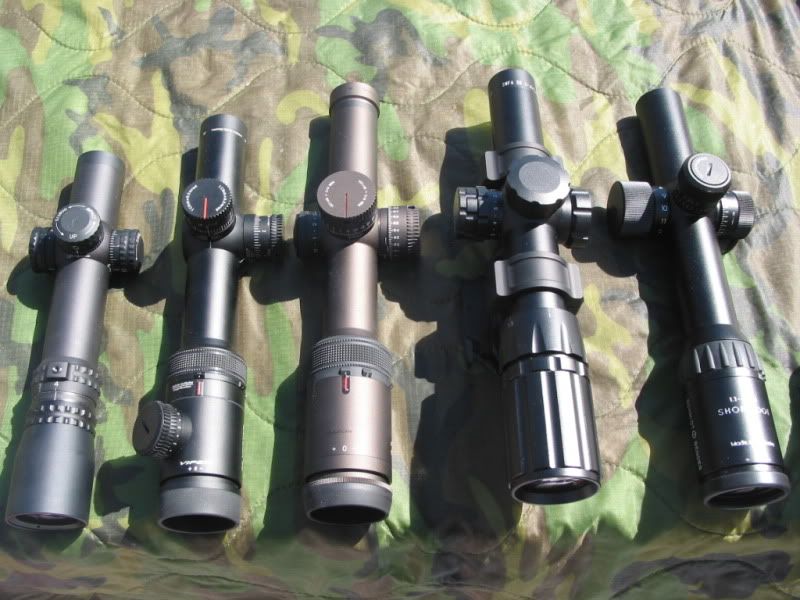
Nightforce NXS 1-4 NXS Compact Mil Dot:
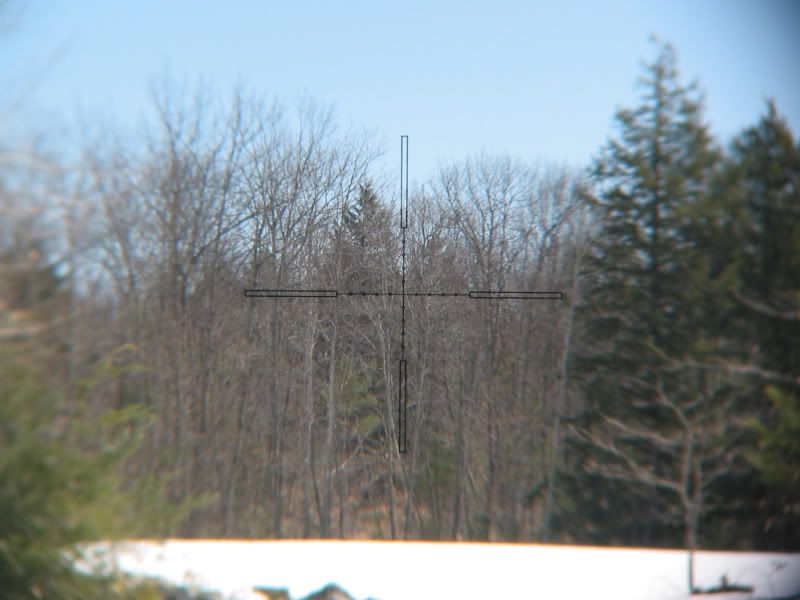
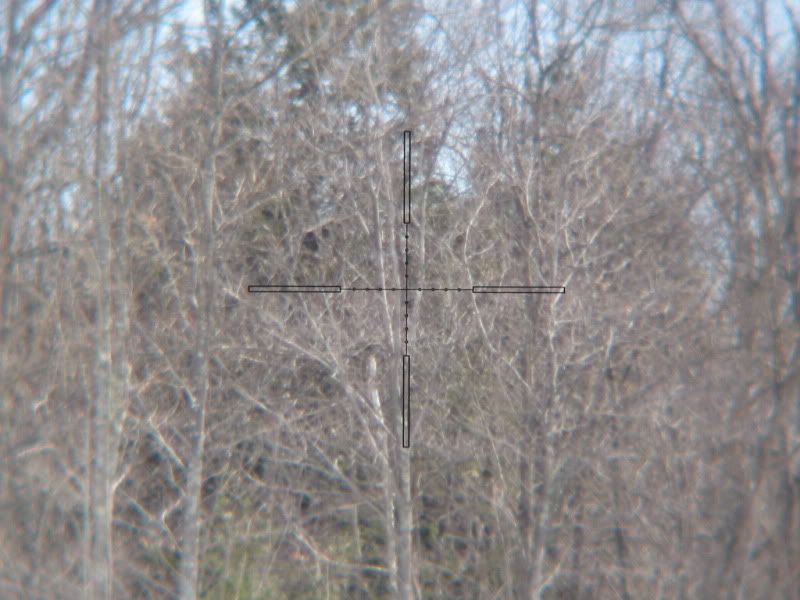
Magnification: 1-4x
Objective Diameter: 24mm
Exit Pupil Diameter: 16mm @ 1x 6mm @ 4x
Field Of View: 100ft @ 1x 25ft @4x
Eye Relief: 3.5in (90mm)
Internal Adjustment Range: 100moa elev. 100moa wind.
Click Value: .250moa
Tube Diameter: 30mm (1.18in)
Ocular Diameter: 33mm
Mounting Length: 5.4in
Weight: 17oz (1-4x)
Overall Length: 8.8in
Reticles: NP-1, FC-2, Mil-Dot
Nightforce Optics has a well known reputation for heavy duty construction. No argument here. It’s a compact rugged option, for certain. I’m also convinced there’s a reason they don’t call themselves Dayforce Optics. The hollowed out reticles are damn near invisible for practical ranges that justify 1X-4X variable scopes. Frankly, the NXS 1-4 Mil Dot sucks at 1X. Up close, I really like the FC-2 option for daytime use as its design clearly inspired the SS. Even so, the FC-2 doesn’t offer much in the way of precise aiming past the 5.56 cartridge’s point blank range. I went with the Mil Dot here to compare against the SS’s FFP reticle. At 4X, the NF offers absolutely no discernable advantage over the SS. In fact, I find the NF’s reticle to bleed/bloom while illuminated. I also find the SS to have better glass, comparatively. The glass quality of the NXS is great, but not SS great. The SS is exceptionally crisp and bright. That bump in clarity makes the SS’s crosshairs really sharp. The SS has horizontal stadia as opposed to mil dots. I like that myself. By my account the SS blows the NXS Mil Dot away at 1X and outperforms it at 4X. Comparing it to the FC-2 version at 1X, the SS is comparable but blows it away at 4X. Construction wise, I couldn’t tell which optic appears stronger. They’re both very robust optics. Overall I’m of the opinion the SS is a better scope than the NF, regardless of what reticle the NF is wearing. Considering the SS lists at $800 vs. $1100+/-…the decision is an easy one.
Hello all. Here is a blue collar comparison of seven low power variable scopes. A friend of mine let me borrow them so I could spread the good word across this great nation of ours. I'm simply giving my personal observations with regards to glass quality, construction, reticle design, illumination, price, etc. I didn’t put any rounds downrange with these scopes. This is soley based on my handling and comparing them to each other. Moreover, this is a review of how they stack up to the SS 1-4 HD. Simply looking to pay forward my time spent reading Snipershide. Cheers!
Pictured, from left to right:
BSA Cats Eye, Leatherwood CMR, Nightforce NXS 1-4 Mildot, Trijicon TR24 German #4, Vortex PST 1-4, Vortex Razor HD 1-4, and S&B 1.1-4 Short Dot. Up top is the SS 1-4 HD.

I'm of the opinion that a performance at 1X is extremely important, otherwise, why go with a 1X-4X at all? I'm also of the opinion that an AR15's usefulness is best served below a few hundred yards. Reticle design is paramount. That said, I think an accurized carbine is certainly capable beyond that range. Again, reticle design is paramount as is glass quality. To be able to do it all through a low power variable - that scope needs to cater to CQB type applications at 1X magnification yet boast some real legitimate benefits at 4X. Having the chance to weigh several scopes against each other I am absolutely in favor of the SS 1-4 HD. I'll do my best to explain why. For a general purpose low power variable scope, the SS exceeds every option I’d want to ride my carbines.
First - the comparisons. Cut and pasted specs from each company’s page. Mind you these are just my opinions, nothing more.
BSA Catseye:


*I wrote the specs on this one…
Weight (oz): fat hamster
Length (in): skid mark
Eye Relief (in): not far enough
Field of View @ 100yds (ft): thumb’s width
Exit Pupil (mm): wtf does it even matter, really
MOA: 1 click = 16” oak tree
Lens Coating: Lard
Warranty: Couldn’t pay me to mail it in.
This rubberized paper towel roll sucks so bad; I had a hard time taking pictures of it. The illumination broke, the reticle is canted, and the glass is speckled with toenail grit from the floor of a low budget Chinese factory. The glare off the ocular requires you to wear sunglasses. It never made it back inside the house. It's 20 something feet into the treeline. Hit an oak and careened off into a hemlock. It will probably stay there unless it offends the wildlife and gets thrown back through my kitchen window. Priced at $75 or something....it's the perfect scope for a pellet rifle or spitball straw. Compared to the SS, this scope should be crushed, melted, and recycled into Butler Creek flip up scope covers.
Leatherwood CMR:


Weight (oz):16.5
Length (in):10.2
Eye Relief (in):3
Field of View @ 100yds (ft):94.8 - 26.2
Exit Pupil (mm):11.1 - 6
MOA:1/2
Lens Coating: Diamond TuFF14
Warranty: Limited Lifetime
I don’t feel like writing too much on this one. The value is primarily with its cost. It’s made in China. Unmistakably feels less quality compared to some of the other optics in the line up. Most of my hesitation lies with the fit and finish. Pretty sure it wouldn’t take much to mar the coating on this optic. The reticle is overly complicated in my opinion. The illumination is green and isn’t consistently bright across the horseshoe. Not daytime visible. Worth it? For an affordable entry level “tactical” scope under $300? Absolutely. As for how the CMR compares to the SS, it really doesn’t on any level. It’s a fraction of the SS at a fraction of the price. Still, I think the CMR has its place although for the money I’d probably want a reputable traditional scope over a budget tactical option. That’s just me though. YMMV.
Trijicon Accupoint TR24-3G:


Magnification 1x-4x
Objective Size 24
Bullet Drop Compensator No
Length (In) 10.3
Weight (oz) 14.4
Illumination Source Fiber Optics & Tritium
Reticle Pattern German #4 Crosshair
Day Reticle Color Green
Night Reticle Color Green
Eye Relief 3.2
Exit Pupil 17.5 to 5.1
Field of View @ 100 yards (ft) 97.5 to 24.2
Adjustment @ 100 yards (clicks/in) 4
Tube Size 30mm
Who doesn’t have some love for the Accupoint? It’s a great scope, great glass, with great incorporation of fiber optics to boast constant illumination regardless of ambient light. I will say that should one want a TR24, the triangle version is the only way to roll. At 1X, where reticle design matters most…the TR24’s primary advantage is its fiber optic. Otherwise, the scope has no substantial mojo over other scopes on the market. The triangle, mind you, is truly an incredible option for daytime shooting below 200/300 yards. Some use it well out to 400. Beyond point blank range, the reticle usefulness nosedives unless you know the range and want to mess with the turrets. Some do some don’t. Once the night falls, I don’t think the tritium does much for you outside of adding some contrast to the reticle. Once you touch off a weapon light – the reticle goes black. Manual illumination matters and Trijicon doesn’t employ the technology. Whereas the TR24 is certainly daytime savvy, the SS is night and daytime savvy. Where its daylight illumination level (setting #11) may not gleam like the Accupoint, the black reticle jumps right out and contrasts extremely well. At night, the SS is the obvious choice. Compared to the TR24, the SS has equal or better glass. The TR24 is a great choice, but I think the SS is a better option in a general 1X-4X. It’s simply more versatile. On an AR15, I feel the TR24 isn’t the 24/7 optic everyone wants it to be. I feel the SS is. No disrespect to the Accupoint though. I love that optic. I have a 3-9 on my deer rifle. That fiber optic reticle is such a bonus for a deer hunter.
With those three options out of the way, we can concentrate on some better optics that are worth a deeper evaluation and comparison to the SS 1-4 HD. I believe the following five scopes all machine their tubes from solid bar stock 6061-T6 aircraft-grade aluminum alloy. So let’s assume construction is on par. All adjustments and moving components on the following optics are also comparable and do not offer a real advantage over the other. Not that I can tell anyway. There may be some stark differences internally – but everything works as advertised. The real differences between the following are in the glass quality and reticle design.

Nightforce NXS 1-4 NXS Compact Mil Dot:


Magnification: 1-4x
Objective Diameter: 24mm
Exit Pupil Diameter: 16mm @ 1x 6mm @ 4x
Field Of View: 100ft @ 1x 25ft @4x
Eye Relief: 3.5in (90mm)
Internal Adjustment Range: 100moa elev. 100moa wind.
Click Value: .250moa
Tube Diameter: 30mm (1.18in)
Ocular Diameter: 33mm
Mounting Length: 5.4in
Weight: 17oz (1-4x)
Overall Length: 8.8in
Reticles: NP-1, FC-2, Mil-Dot
Nightforce Optics has a well known reputation for heavy duty construction. No argument here. It’s a compact rugged option, for certain. I’m also convinced there’s a reason they don’t call themselves Dayforce Optics. The hollowed out reticles are damn near invisible for practical ranges that justify 1X-4X variable scopes. Frankly, the NXS 1-4 Mil Dot sucks at 1X. Up close, I really like the FC-2 option for daytime use as its design clearly inspired the SS. Even so, the FC-2 doesn’t offer much in the way of precise aiming past the 5.56 cartridge’s point blank range. I went with the Mil Dot here to compare against the SS’s FFP reticle. At 4X, the NF offers absolutely no discernable advantage over the SS. In fact, I find the NF’s reticle to bleed/bloom while illuminated. I also find the SS to have better glass, comparatively. The glass quality of the NXS is great, but not SS great. The SS is exceptionally crisp and bright. That bump in clarity makes the SS’s crosshairs really sharp. The SS has horizontal stadia as opposed to mil dots. I like that myself. By my account the SS blows the NXS Mil Dot away at 1X and outperforms it at 4X. Comparing it to the FC-2 version at 1X, the SS is comparable but blows it away at 4X. Construction wise, I couldn’t tell which optic appears stronger. They’re both very robust optics. Overall I’m of the opinion the SS is a better scope than the NF, regardless of what reticle the NF is wearing. Considering the SS lists at $800 vs. $1100+/-…the decision is an easy one.


